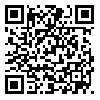BibTeX | RIS | EndNote | Medlars | ProCite | Reference Manager | RefWorks
Send citation to:
URL: http://journal.rums.ac.ir/article-1-3548-en.html
Background and Objective: Critical thinking is the type of thinking that follows evidence in order to achieve a reliable result. The present study aimed to assess the critical thinking among faculty members of Rafsanjan University of Medical Sciences in 2013 on the basis of age, gender, type of employment, academic rank, administrative activities, teaching experiences, number of courses, and type of faculty.
Materials and Methods: In this descriptive study, data were collected through a questionnaire consisted of two parts. The first part included demographic variables and the second part was to measure critical thinking based on Ricketts Critical Thinking Disposition Inventory (CTDI).The questionnaire was distributed among 110 faculty members that 95 (86%) of them completed and returned it. Data was analyzed using descriptive statistics (mean and standard deviation) and inferential statistics including t-test and one way ANOVA.
Results: The results highlighted that there was no significant difference between the mean scores of females (11.25) and males (11.10). The mean scores of subscale innovation had a significant relationship with academic ranks in which the instructors had the highest mean score (4.37) and the assistant professors had the lowest mean score (4.09). The mean scores of subscale innovation also had a significant relationship with the type of faculty in which the Nursing and Midwifery school had the highest mean score (4.37), whilst the Dentistry School had the lowest mean score (4.05).
Conclusion: Based on our results, the mean score of critical thinking and its subscales are in a relative favorable position in faculty members of Rafsanjan University of Medical Sciences. However, there is a need to teach this type of thinking among faculty members especially dental school faculty members.
Key words: Critical thinking, Innovativeness, Maturity, Engagement, Faculty members
Funding: There was no fund for this study
Conflict of interest: None declared.
Ethical approval: The Ethics Committee of Rafsanjan University of Medical Sciences approved the study.
How to cite this article: Rafiei R, Zare-Bidaki M, Bakhtar M, Rezaeian M. Evaluation of Critical Thinking Disposition in Faculty Members of Rafsanjan University of Medical Sciences in 2013. J Rafsanjan Univ Med Sci 2017; 15(12): 1161-72. [Farsi]
Received: 2016/11/8 | Accepted: 2017/03/8 | Published: 2017/03/8
| Rights and permissions | |
 |
This work is licensed under a Creative Commons Attribution-NonCommercial 4.0 International License. |






